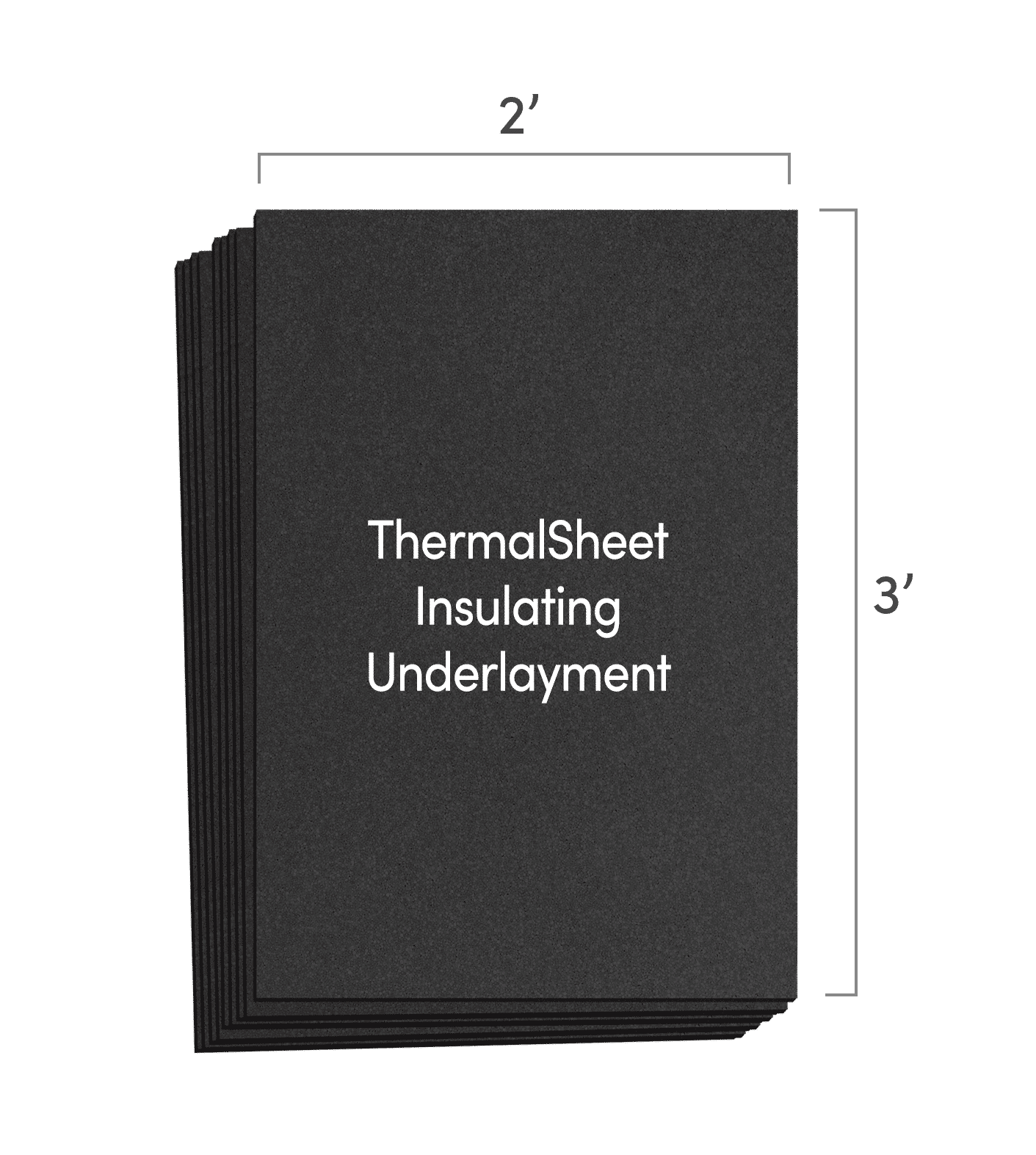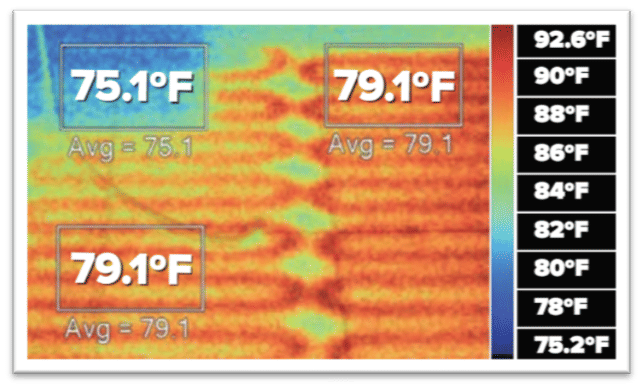A Smart Start: Why Insulation Matters
If you’re installing electric floor heating over a concrete slab, there’s one crucial step you should never skip—insulation. Concrete has a low R-value (between 0.5 and 1.5), meaning it pulls heat downward instead of allowing it to rise into your room. Without insulation, the concrete slab will absorb your system’s radiant heat, leaving your floors colder and your energy bills higher.
The solution? Install ThermalSheet™ insulating underlayment between your concrete and heating cables. This synthetic cork material is specifically engineered to act as a thermal break, ensuring that warmth radiates upward—where it belongs.

Thermal Imaging: Proof That Insulation Works
A thermal image tells the story best. The area of the floor without underlayment shows a noticeably cooler temperature of 75.1°F. In contrast, the area with ThermalSheet™ underlayment reaches a warmer, more efficient 79.1°F.
Thermal imaging clearly shows the difference:
Without underlayment: Cold zones remain, as the slab absorbs radiant heat.
With ThermalSheet™: Consistent, even warmth across the floor surface.

Common Questions About Insulating Under Radiant Heat
What is the R-value of concrete, and why does it matter?
Concrete’s R-value is too low to prevent downward heat loss. Without an insulating layer, your floor heating system wastes energy heating the slab instead of your space.
Can I install radiant floor heating directly on a concrete slab?
Technically yes—but it’s inefficient. You’ll lose heat and increase energy costs. For best results, install an insulating underlayment like ThermalSheet™.
How does underlayment improve performance?
Insulating underlayment redirects heat into your flooring material and room, improving heat-up time, energy efficiency, and overall comfort.
Installation Tips for Success
Prepare the surface: Make sure the slab is dry, clean, and level.
Use a vapor barrier if needed: Especially in moisture-prone areas.
Install ThermalSheet™ first: Follow manufacturer instructions for secure placement.
Lay heating elements next: Position cables or mats per your heating layout.
Finish with flooring: Use thinset to set tiles or compatible adhesives for other flooring types.
Final Thoughts: Don’t Skip This Step
Skipping underlayment may save time during installation—but it sacrifices long-term performance and comfort. With just one added layer of ThermalSheet™, your radiant floor heating system will work smarter, faster, and more efficiently.
If you’re serious about creating a warm and energy-efficient space over concrete, insulating underlayment is a must.
Ready to Start?
Visit WarmlyYours.com to explore our underlayment options and radiant heating systems. Or call us at (800) 875-5285 to speak with a knowledgeable representative.
For more information, visit our website at www.warmlyyours.com. You can also call us at (800) 875-5285 to speak with one of our friendly knowledgeable account managers. Our technical support staff is available 24/7 to assist you during installation.




